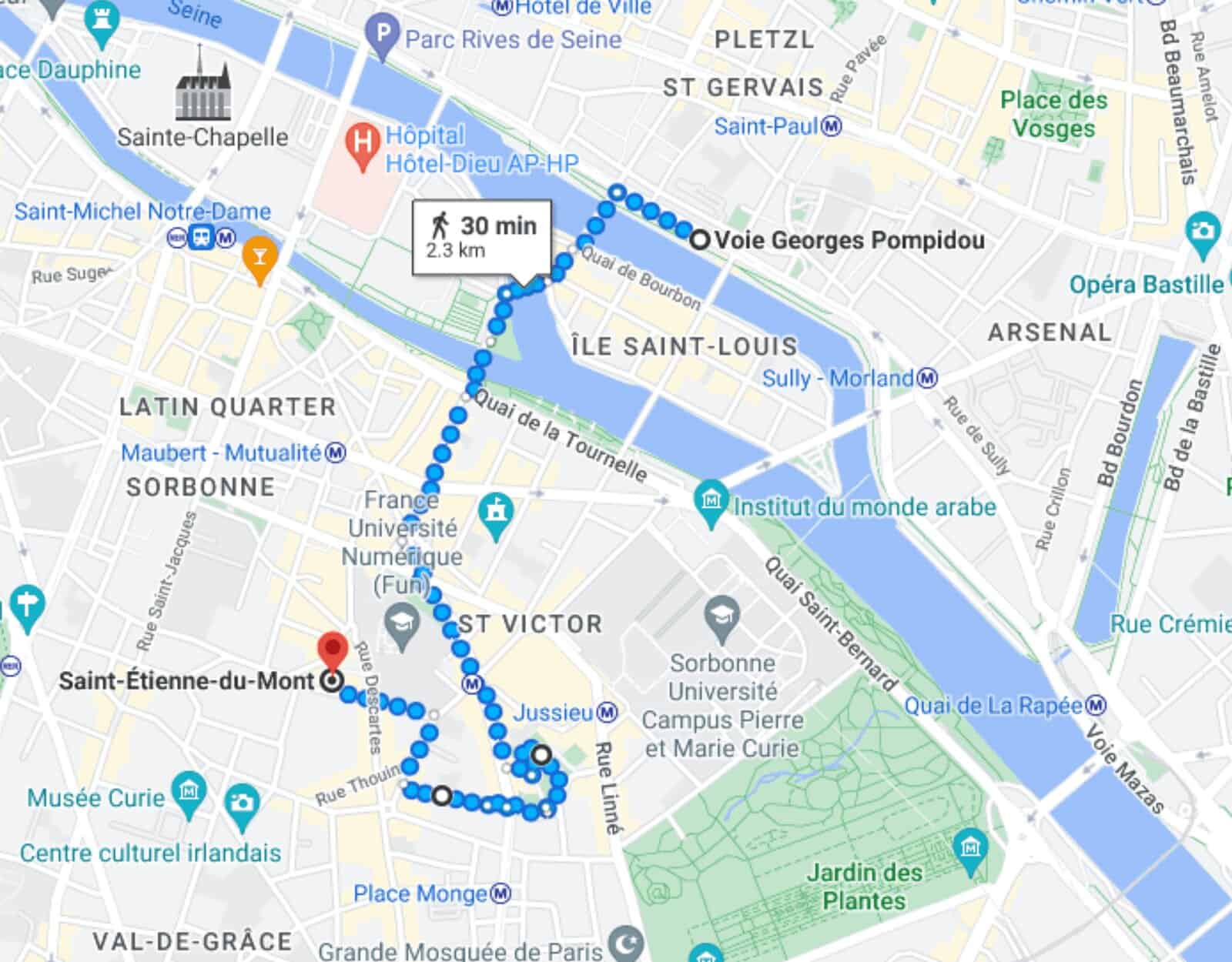


April 26, 2022
An unexpected travel deal allowed me to avoid the traditional human swarms plaguing Paris during the peak season.

The walk started with a quick view of one of Paris' most recognizable landmarks. Restoration from the damage created by a towering inferno in 2019 is due for the 2024 Paris Olympics.

Here is where the quaint Latin Quarter is. Home to the famous Sorbonne University and student and tourist-filled cafes.

Arènes de Lutèce, a 1st century AD Roman amphitheater hidden from street view in the Latin Quarter, is one of the city’s two visible remaining structures from when Rome ruled this swath of Europe and Paris was just a small settlement called Lutetia, or Lutèce.

Historians believed some of the five cubbyhole-type indentations under the bleaches were animal cages that opened directly into the arena.

According to historians, the amphitheater and its terraces could accommodate up to 15,000-17,000 people, with a stage thought to be one of the longest in the Roman world (41m).

The amphitheatre was dismantled during the barbaric invasions of 280 A.D. when Lutetia was sacked. At around 1210, the arena was completely filled in.

In 1869 during the opening of the new Rue Monge (1860-1869), which included the allocation of building plots and excavation works, Théodore Vaquer discovered the Roman remains.

Mortillet was an archaeologist and anthropologist best known for his clarification and ordering of the archeology of the Paleolithic.

Wallace Fountains are public drinking fountains recognized worldwide as one of the symbols of Paris.

These fountaines are large cast-iron sculptures scattered throughout the city, mainly along the most-frequented sidewalks.

The fountains were financed and roughly designed by Sir Richard Wallace. The final design and sculpture are by Wallace's friend Charles-Auguste Lebourg.

Fondane was a poet, critic, and existentialist philosopher. He died in a gas chamber during the last wave of the Holocaust.

The walk followed rue Rollin, a short, quiet pedestrian-only street. It is close to the lively student nightlife on Place Contrascarpe, rue Descartes, and rue Mouffetard.

Back to the fountains, as a result of the siege of Paris and the Commune episode, many aqueducts were destroyed, and the price of water, already higher than normal, increased considerably. Wallace built the fountains to allow people of modest means to have access to drinking water.

The large of the Wallace Fountains are the four caryatids. They represent kindness, simplicity, charity, and sobriety.

Saint-Étienne-du-Mont church is near the Panthéon. It contains the shrine of St. Geneviève, the patron saint of Paris. The west front or facade of the church, in the Renaissance style, was built in 1610.

The interior is a that of a hall church of large proportions, sixty-nine meters long and 25.5 meters wide. The collateral aisles on either side of the nave and choir are unusually high and have large windows, filling the church with light.

The case of the organ of the tribune was made beginning in 1633 and is the oldest and best-preserved original case in Paris. It is topped by a sculpture of Christ surrounded by angels playing the kinnor, an ancient Hebrew variation of the lyre.

The most prominent decorative work in the nave is the pulpit, created in 1651 by Germain Pillion.

It is supported by a carved sculpture of Samson kneeling upon a lion, and holding the jawbone of an ass with which he fought the Philistines.

The most unusual feature of the church is the Jubé or Rood screen, created in about 1530, the only existing example in Paris.

It is an elaborate sculptural screen that separates the nave from the choir. The screen was used as a platform to read the scripture to the ordinary parishioners.

The Chapel of Saint Genevieve is a Flamboyant Gothic shrine to the patron saint of Paris. Her original tomb and relics were destroyed during the French Revolution.

The Chasse or reliquary seen now was made in the 19th century of chiseled and gilded copper. It contains a fragment of her original tomb.

The chapels along the sides of the cathedral and side walls have sculptures and paintings by many important 16th, 17th, and 18th-century artists, many protected by the French Ministry of Culture.
